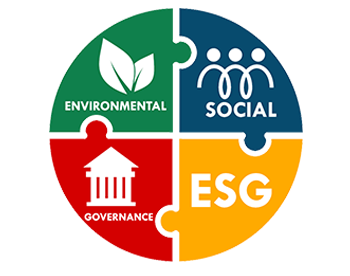 ESG - Environmental, Social and Governance
ESG - Environmental, Social and Governance
Sustainability literacy and knowledge Assessment Tool (for faculty)
AASTMT Institutional Assessment of Sustainability Literacy and Knowledge Among Staff
Introduction
The Arab Academy for Science, Technology and Maritime Transport (AASTMT) is committed to sustainability by embedding sustainable practices across all institutional domains. AASTMT has established a dedicated assessment mechanism for evaluating sustainability literacy and applied knowledge among academic, administrative, and technical staff.
Objectives
- Ensure foundational sustainability knowledge across all staff.
- Inform decision-making with sustainability principles.
- Identify training needs and improve professional development efforts.
Key Performance Indicators (KPIs)
|
KPI |
Description |
|
1. Sustainability Literacy Score |
Understanding of sustainability principles, systems thinking, and long-term vision. |
|
2. Awareness of SDG Integration |
Familiarity with the UN Sustainable Development Goals. |
|
3. Ecological & Resource Understanding |
Knowledge of climate change, biodiversity, and conservation. |
|
4. Social Impact Competency |
Understanding of equity, inclusion, and social responsibility. |
|
5. Economic Sustainability Literacy |
Circular economy, green procurement, and sustainable finance. |
|
6. Application in Institutional Context |
Real-world decision-making using sustainability knowledge. |
|
7. Role Integration |
Integration of sustainability into daily responsibilities. |
|
8. Continuous Development |
Participation in workshops and interest in further training. |
Scoring and Analysis
- A score of 70%+ indicates basic proficiency.
- Scenario responses are used to assess practical applications.
- Self-reflections help shape future training and policy strategies.
Survey Structure
Section A – Staff Profile (Not Scored)
- Department/Faculty:
- Role: Academic | Administrative | Technical
- Years of Service:
Section B – Core Knowledge (Multiple Choice)
1. What best describes sustainable practice in operations?
A. Maximize immediate gains
B. Reduce unnecessary resource use
C. Ignore long-term impact
D. Centralize decisions only at leadership
2. A circular economy promotes:
A. Energy reduction through bans
B. Product reuse and life-cycle planning
C. Manufacturing job reductions
D. Rotating economic strategy
3. Effective carbon footprint reduction includes:
A. Outsourcing emissions-heavy tasks
B. Encouraging single-use plastics
C. Digital and low-energy tech adoption
D. Cutting costs without environmental review
Section C – Scenario-Based (Applied Decision-Making)
1. In a procurement policy review, the most sustainable choice is to:
A. Select vendors with environmental and social certifications
B. Buy in bulk from cheapest sources
C. Stay with familiar vendors
D. Skip environmental checks
2. New staff orientation should:
A. Offer optional sustainability resources
B. Include mandatory sessions on institutional sustainability strategy
C. Focus only on procedures
D. Skip sustainability to avoid sensitive discussions
Section D – Self-Assessment (Likert Scale 1–5)
Rate the following (1: Strongly Disagree — 5: Strongly Agree):
- I understand how my role supports sustainability.
- I consider sustainability in my work decisions.
- I seek new learning about sustainability.
- I’m confident discussing sustainability with peers.
- Sustainability should be part of institutional values.
Section E – Feedback & Training Interests
1. How can AASTMT improve sustainability awareness among staff?
Open-ended answer
2. Which training topics are you interested in?
- Climate change and resilience
- Green campus practices
- Sustainable innovation
- Circular economy
- Water and energy efficiency
- Inclusive and equitable development


